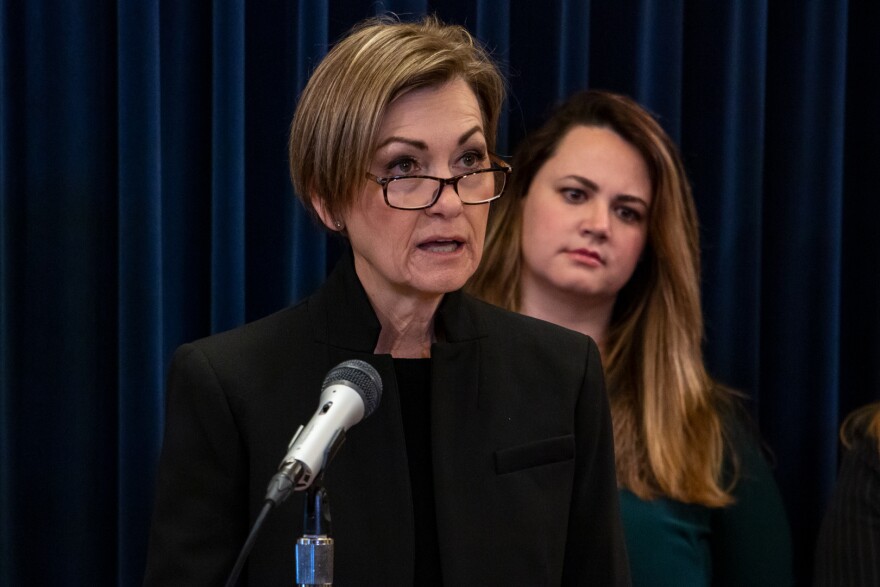Gov. Kim Reynolds said Wednesday that Iowa has about 280 ventilators available and is trying to get more as coronavirus infections continue to increase.
A ventilator is a machine that essentially breathes for a patient who cannot breathe on their own and can help save lives. Respiratory failure is a symptom of the most severe cases of COVID-19, and officials across the country have said there are not enough ventilators for all of the Americans who might need one.
“When it comes to [ventilators] we have approximately 280 right now,” Reynolds said at a news conference in response to a question from IPR. “We have another order in. We are procuring more all the time.”
Her spokesperson clarified Iowa has about 280 ventilators that are "currently available and not in use."
Reynolds also said the state is working with health care providers to convert anesthesia machines into ventilators, following CDC guidelines. State and federal governments are working with manufacturers to develop more.
The state also has about 9,000 staffed hospital beds, but more could be added if more trained workers become available, according to Iowa Department of Public Health spokesperson Amy McCoy.
Hospitals and other care facilities are in need of personal protective equipment, known as PPE, to protect them from getting and spreading COVID-19. These include respirators, face masks, face shields, surgical gowns, coveralls and gloves.
“So we just monitor it on a daily basis to make sure we can meet the needs, and we’re constantly looking for additional resources where there are shortages,” Reynolds said. “But Iowa is no different from any other state across this country. PPE continues to be a challenge.”
Reynolds said the state requested equipment from a stockpile controlled by the federal government, but did not provide information about how much the state requested and how much it received or will receive. Other states have reported this information.
She said they are also working with businesses and the Iowa Department of Corrections to get more PPE manufactured. Some Iowans are sewing masks at home.
The Iowa National Guard announced it distributed four semitrailers of PPE to five counties Tuesday, but did not describe detailed amounts of supplies.
Until Wednesday, state officials were not providing any specific numbers about the state’s supply of ventilators for patients or protective equipment for medical providers.
McCoy said Wednesday the state’s inventory of masks, gloves, eye protection, surgical gowns and face shields “changes by the hour as we distribute stockpiles and receive orders.”
Previously, she said said supply numbers are “confidential as part of the state’s public health disaster emergency response protocols.”
Iowa Freedom of Information Council Executive Director Randy Evans said state law contains an open records exemption for emergency response plans.
“I don’t think the exemption is intended to cover such things as the numbers and types of equipment,” Evans said.
He said there does not seem to be a particular disadvantage to the state that would come from releasing just equipment numbers, while keeping secret the locations of where the equipment is stored.
“I think the citizens of Iowa have a right to know whether our state is adequately prepared or is at a tremendous disadvantage when it comes to these crucial life-and-death pieces of equipment,” Evans said.
Reynolds also said Iowans can help conserve PPE and protect health care providers by staying home as much as possible, staying home when sick, covering coughs and sneezes, frequent hand washing, and cleaning surfaces.





